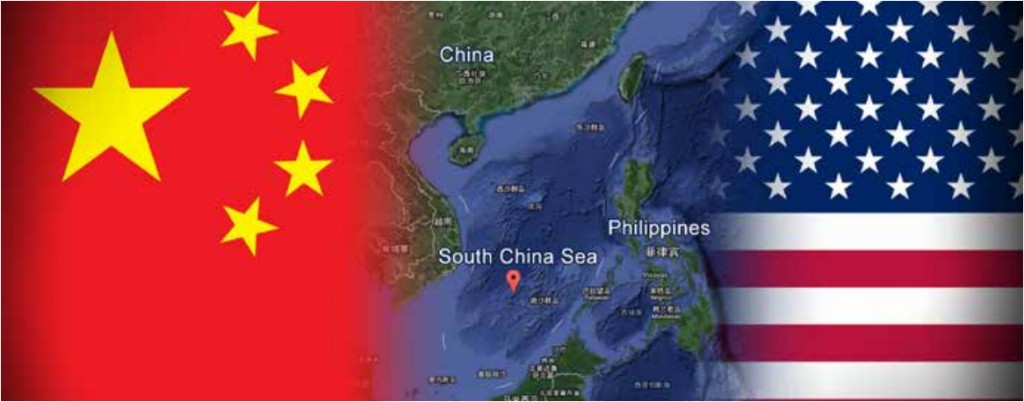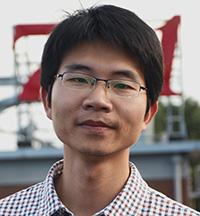On May 9th, the Philippines will vote for a new president. Economically, the old stereotype as the “sick man of Asia” has faded to history. In the near future, the naturally beautiful Catholic-majority archipelago has an economic growth potential at 6.5% per annum. Since 2010, the administration of President Benigno Aquino III, 56, has played a key role in the economic rejuvenation. Nevertheless, poverty rate remains officially over 20% and income equality is high internationally.

The 2016 election has been widely debated among some 60 million voting-age Filipinos who represent a youthful nation of almost 100 million people at home and 10 million abroad. In the past, these elections have been mainly about economy, jobs and welfare. Today, foreign affairs and national security is high on the voter agenda. One of the key questions is relations with China, the country’s largest importer and third-largest market for exports. With territorial friction, bilateral ties have become strained.
2016 campaigns, new leaders and China friction
Last year, President Aquino designated former interior minister Manuel “Mar” Roxas, 59, an ex-New York City investment banker, as his successor to sustain his reforms, which Filipinos call Daang Matuwid (“straight path”). As the leader of the ruling Liberal Party (LP), Roxas and his faith in self-disciplining markets appeal to moderate elites. In the polls, he is fourth with 19%, however. Like Aquino, he stresses the importance of the China arbitration case in The Hague.
Currently, the colorful long-term Davao Mayor Rodrigo Duterte, 71, is leading with 30% in polls, with the support of the nationalistic, social-democratic PDP-Laban. His tough stand on crime resonates with most Filipinos, as does his relative economic success in Davao City since the 1980s. In Washington, he has been accused for alleged human rights violations in the anti-drugs efforts, yet geopolitics may loom behind the wariness. Unlike Aquino and Roxas, Duterte would be willing to have bilateral talks with China over the South China Sea. He favors greater economic cooperation with China, has been critical of the U.S.-Philippine alliance and leans closer to China. He has little confidence Washington would honor its defense obligations.
Running as an independent, Senator Grace Poe, 47, has slid down to second with 23%, but remains a formidable contender. To the elites, Poe – the illegitimate child of Marcos, according to gossip – is an acceptable compromise between Aquino and Roxas and against “populist” Binay and “wild card” Duterte. She would like to further greater economic, social and cultural exchange with China but supports the arbitration case. She opposed the new cooperation pact to foster U.S.-Philippine military ties, but mainly for procedural reasons.
Vice President Jejomar “Jojo” Binay, 73, portrays himself as a popular politician who speaks for the poor and ensures social welfare. Initially, the founder of the United Nationalist Alliance (UNA) led the race but is now third with 20%, due to allegations of corruption during his terms as Mayor of Makati City. Like Duterte, Binay would be willing to talk directly with China and is open to joint exploration of resources. His reassessment is fueled by simple realities: “China has money, we need capital.”
Much attention and apprehension has also been focused on the leading vice presidential candidate, Senator Ferdinand “Bongbong” Marcos, 59, the son of Ferdinand and Imelda Marcos. His campaign has attracted support far beyond the Marcos-dominated northern province Ilocos Norte, including the young, poor and excluded. Bongbong has called on the Aquino administration to drop its “belligerent attitude” toward China on territorial claims in the South China Sea. He expects protracted negotiations, but may be open to bilateral talks.
Washington’s retreat – and return
Since the postwar era, Manila has cultivated close relations with Washington and supported the U.S. through the Cold War, the War on Terror and remains a major non-NATO ally. Between 1947 and 1992, pursuant to the Military Bases Agreement, the US operated major facilities at Clark Air Base, Subic Bay Naval Complex and several smaller installations.
A mutual defense treaty was signed in 1951. It was followed by the presidency of Ramon Magsaysay, when the country was seen as one of the least corrupt and most likely to prosper fast in the region. And yet, it was after those early years of independence that the Philippines fell behind the rest of Asia.
Much of the economic plunge stems from the era of Ferdinand Marcos (1965-86), which is said to have left a huge legacy of crony capitalism and corruption.
To boost his domestic power, Marcos nurtured U.S. relations, which thrived from Nixon to Reagan. It was only in 1984 that the Reagan administration began distancing from the Marcos regime. And after the “People Power Revolution,” the Philippine Senate rejected the bases treaty and U.S. forces left the country in 1992.
As a fourth-generation politician and Liberal Party leader, Aquino’s 2010 election win was buttressed by the legacy of his father, Benigno Aquino Jr, an opposition leader assassinated by Marcos, and his mother Corazon Aquino, the first post-Marcos president (1986-92). Meanwhile, U.S. investment has continued to play a vital role in the economy, while the security relationship rested on the 1951 Mutual Defense Treaty (MDT), which was reinforced by the 1999 Visiting Forces Agreement (VFA).
About a decade later, the Obama administration began to execute its pivot to Asia, including the plan to move the majority of U.S. warships to Asia Pacific by 2020, as Defense Secretary Leon Panetta revealed in June 2012. While successive secretaries of defense and the White House have said that the aim of the pivot is not to “contain” China’s rise in the region, the claim has not been persuasive in Beijing, which has taken its counter-moves in the region.
At the same time, President Aquino and his Foreign Minister Albert del Rosario developed a tougher policy framework, which sees bilateral talks with China as largely futile, tried multilateral approach through the ASEAN and took the dispute to the international court, while opting for a defense alliance with Washington.
Aquino and Rosario pushed the 2014 Enhanced Defense Cooperation Agreement (EDCA), which allows the U.S. to increase military presence in the Philippines. As the EDCA was followed by the return of US Navy back to Subic Bay, critics said sarcastically, “Everything old is new again.”
From balancing to hedging: a window of peace?
However, the 2016 presidential campaigns suggest that, to a degree, the current policy path may have eclipsed. Naturally, all candidates defend the Philippines’ sovereignty, yet most do not stand behind the Aquino-Rosario approach without some qualifications.
Until the Aquino administration, Manila sought to hedge between U.S. security assurances and China’s economic development. Under the new doctrine, it has allied with the U.S. to balance China – or that’s the perception at least.
The concern is that one-sided cooperation with the U.S. may result in increasing friction not just with China but Islamic extremism in the Southern Philippines, which would reduce perceived political advantages. Finally, economic cooperation – particularly Chinese capital and infrastructure investment by the AIIB – could significantly accelerate Philippine development.
The leading presidential candidates seem to favor a China policy approach that would be less about balancing and more about hedging. True hedging would seek security benefits from the U.S. defense umbrella; economic returns from trade and investment with China; and political advantages from cooperation with both nations. That, in turn, would pave way to a new opportunity window in the Philippines-U.S.-China triangle, which could relieve tensions in Asia Pacific overall.


